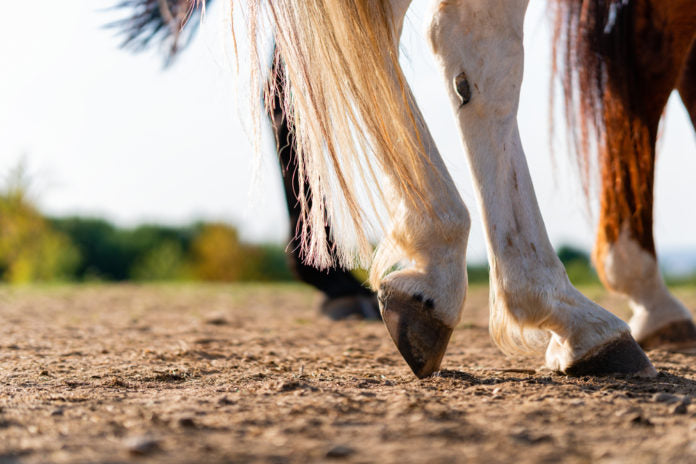Hemp Education

Hemp vs. Soybean
As alternate forms of plant-based proteins become more popular, it is crucial that we look at the differences of where protein is derived from, and the actual nutritional benefits (bioavailability), of these proteins.
Understanding some of these differences helps us know more about what we feed ourselves, and sometimes more importantly, our animals.
Since the soybean is the most preferred source of protein year over year in animal feeds, we are starting our educational articles on this subject.
Sustainability
Let’s start by looking at how these plants are grown.
Soybeans require from 15 to up to 25 inches of water per growing season depending on where and when it is planted. Hemp only requires as little as 12 to 22 inches per growing season.
Worldwide in 2013 for example, there were over 226 million metric tons of soybeans produced. Only 0.1% of that crop was grown organically (Hartman). Over 90% of the Soybeans grown in America have been genetically modified to be “Round up Ready.” This means the plant won’t die when it is sprayed with the weed killer.
In contrast to the soybean, hemp does not require the level of herbicides, pesticides, or chemicals to be grown successfully - making it one of the most natural products we can put into our bodies.
Hemp is more sustainable to grow than soy protein. “[Hemp] can be used in several more applications than both corn and soybean. Hemp uses less water, grows easily, and requires less land. As the hemp plant grows, it replenishes the soil it grows in rather than stripping the soil of its nutrients.
Hemp grows quickly and the plants can grow in close proximity as well, making it easier for the plant to thrive while minimizing the chance for weeds to grow and compete for water and soil nutrients. Corn and soybean do not have this advantage as hemp does” (Good Hemp).
The tap roots of hemp plants reach deep into soil and absorb whatever is in the soil, a process called phytoremediation. As the plants absorb nitrogen and carbon from the air, they simultaneously put the elements back into ground soil, which, in turn, replenishes the soil. The tap root also helps break up and aerate the soil naturally which makes it a great rotational cash crop, that is if you have a market.
Side benefits for the planet
Hemp can be a great way to reduce our dependency on petroleum-based plastic. Hemp has the potential to be the plastic of the future because nearly anything made of plastic can be made from hemp. Hemp plants absorb carbon dioxide as they grow, and hemp plastic is 100% biodegradable. The plastic potential from the hemp plant comes from different plant varieties than are used for the feed and food varieties. It is important we understand the well-rounded abilities this plant has to offer regarding overall sustainability.
Nutritional Values of Soybean & Hemp from processing
Soy protein is not only less sustainable, but it is also probably not as good of a source of protein as you would think. Most Soy & Pea protein is processed with a chemical solvent extraction process. The solvents commonly used for soy is hexane, which is similar in structure to gasoline.
Aside from the use of solvents, soy and pea is not typically cold pressed for its oil as hemp is. The high heat used to process soy & pea destroys the enzyme functions of the protein. In other words, the protein is essentially ‘dead’. It has lost its electrical charge” (Nature’s Edge). Soy loses almost 95% of its nutritional value in the curation process, whereas hemp maintains nearly 100% of its nutritional value if processed naturally with the goal being natural nutrition. The soy process typically involves a heat treatment that activates a trypsin inhibitor (which can be found in raw soybeans). In other words, heat treatment reduces the ability to digest the soy protein properly.
“Hemp protein is also free of oligosaccharides that are found in Soybean protein. Keep in mind that since the soybean is a legume, a bean, its oligosaccharide content can lead to unpleasant stomach upset, indigestion and gas [in humans and animals].
Equine Nutrition
Looking at soy protein for feed from an equestrian perspective can be concerning. Many horses are allergic to soy, yet it remains a common ingredient in farm feeds. Allergic reactions can be found in the form of respiratory issues, skin irritations, and digestive issues. These issues may be directly related to soy or could be issues with the genetic modifications and/or chemicals that are too common with the process of growing soy protein. Soy is high in isoflavones, which can disguise itself as estrogen in a horse and can affect breeding and manner.
In Dr. Getty’s fundamental resource book, Feed Your Horse Like a Horse, Getty finds that “soybean oil is very high in linoleic acid, an omega 6 fatty acid. Some linoleic acid is required because it is classified as essential, meaning the horse cannot produce it. But too much, relative to alpha-linolenic acid (ALA), an essential omega 3 fatty acid, will increase inflammation throughout the body. Since soybean oil has approximately eight times more linoleic acid than Alpha Linolenic Acid (ALA), it can lead to health issues relating to joints, digestive tract, hooves, eyes, skin, lungs, and even the brain” (Getty).
On the other hand, the hemp seed contains a completely digestible plant based protein that has all twenty amino acids including the ten essential amino acids for the horse. As a result, Hemp is easy to digest, can even be eaten raw, and contains no enzyme inhibitors. Hemp has no record of causing health defects in horses and humans after thousands of years of use. Hemp is high in Omega 3, 6, 9 plus the benefits of natural and rare GLA fatty acid.
Summary
We have seen first-hand that cows and horses have no problem eating the hemp plant in Nature. The question we must ask ourselves is, “would a horse eat soybeans on their own? If the answer is no, the follow up question would have to be, then why are we feeding it to them in such large quantities?
Investing in hemp is investing in our health, our animal’s health, and the world’s health.[1]
Works Cited
Getty, Juliet. “Choose Hemp Instead of Soy!” HolisticHorse.com, 25 Aug. 2018, https://holistichorse.com/health-care/choose-hemp-over-soy/#_edn1.
Good Hemp. “Hemp as an Alternative to Corn and Soybean.” IND HEMP, 2022, https://indhemp.com/2022-1-3-hemp-as-an-alternative-to-corn-and-soybean/#:~:text=Growing%20hemp%20is%20more%20sustainable,easily%20and%20requires%20less%20land.
Hartman, G.L.; Pawlowski, M.L.; Herman, T.K.; Eastburn, D. Organically Grown Soybean Production in the USA: Constraints and Management of Pathogens and Insect Pests. Agronomy 2016, 6, 16. https://doi.org/10.3390/agronomy6010016
Nature's Edge. “Hemp vs Soy or Pea Protein.” Nature's Edge, 2021, https://www.naturesedgeeq.com/hemp-vs-soy-or-pea-protein.html.
[1] This article was written by Mariah Wildes and published by Sturdy Horse. All additional works are cited and all rights are reserved without the permission of the author or publisher.

Natural Hoof Care From the Inside Out
Nutrition is arguably the most important factor when it comes to hoof health. Here’s how to make sure he’s getting what he needs from his diet.
